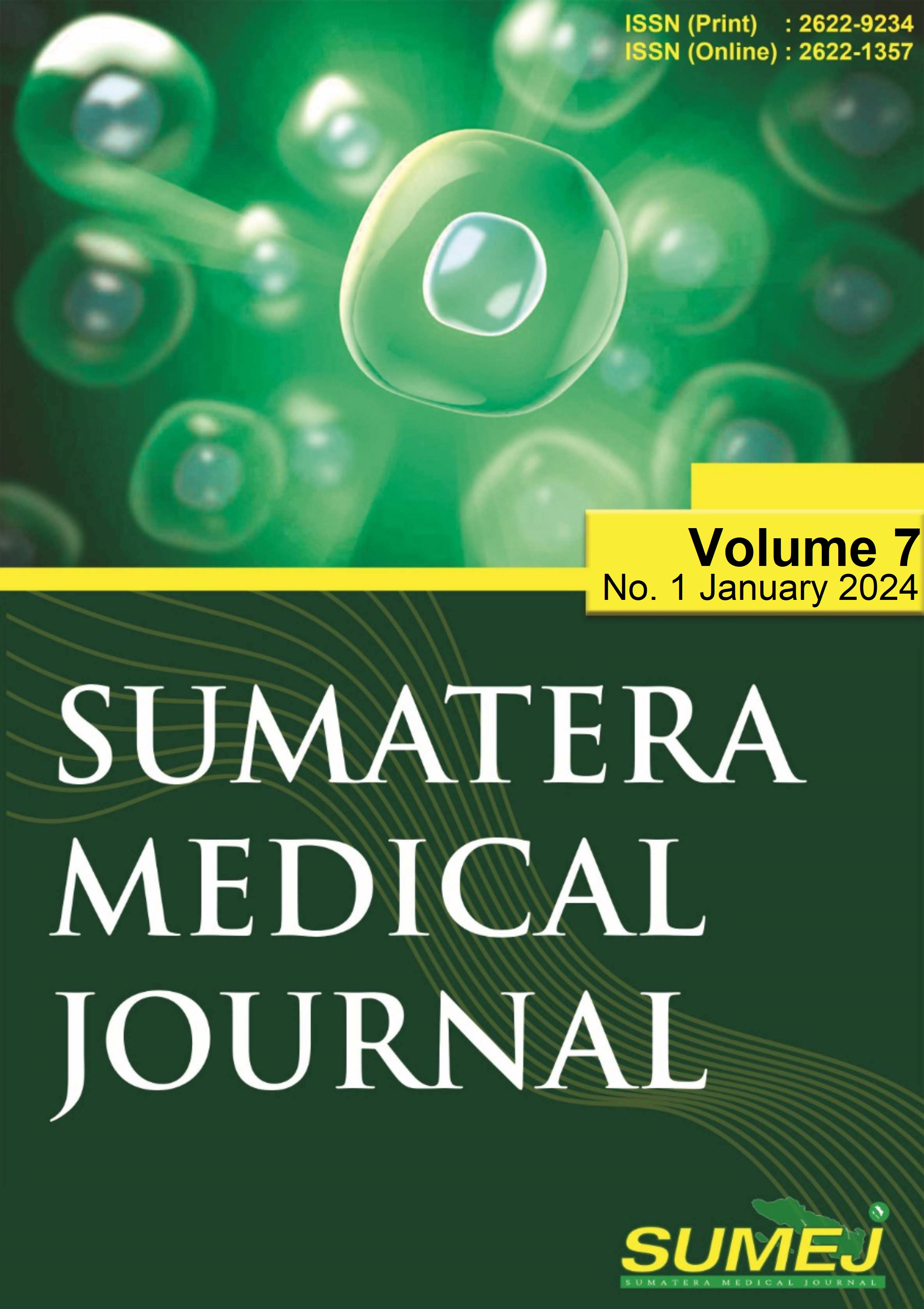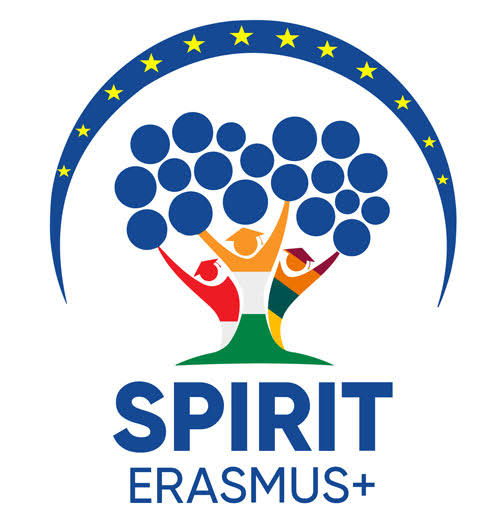The Diagnostic Challenge of Distinguishing Temporal Lobe Encephaloceles from Sphenoid Sinus Mucoceles
DOI:
https://doi.org/10.32734/sumej.v7i1.14299Keywords:
diagnostic error, diagnostic imaging, encephalocele, mucocele, paranasal sinusAbstract
Background: Temporal lobe encephaloceles are rare defects involving brain herniation through the skull base, often misdiagnosed as sphenoid sinus mucoceles—cystic lesions due to mucus buildup. Both conditions share overlapping neurological, nasal, and ophthalmologic symptoms, but require different treatments. Objective: To emphasize the importance of accurate diagnosis in distinguishing temporal lobe encephaloceles from sphenoid sinus mucoceles and to highlight the role of imaging in clinical management. Methods: A 27-year-old healthy man presented with seizure and loss of consciousness, with a history of head trauma 13 years earlier. Physical examinations, including cranial nerve and cerebellar assessments, were normal. Rigid nasoendoscopy was unremarkable. Imaging included CT and brain MRI. Results: CT scan suggested an expanded left sphenoid sinus likely mucocele with temporal lobe encephalomalacia. Brain MRI confirmed a left temporal lobe encephalocele. The patient underwent successful transcranial repair. Conclusion: Misinterpretation of imaging may lead to incorrect management. Comprehensive evaluation, particularly with MRI, is essential to differentiate encephaloceles from mucoceles for appropriate treatment planning.
Downloads
References
Wind JJ, Caputy AJ, and Roberti F. Spontaneous encephaloceles of the temporal lobe. Neurosurg Focus. 2008;25(6). doi: 10.3171/FOC.2008.25.12.E11.
Bahgat M, Bahgat Y, and Bahgat A. Sphenoid sinus mucocele. BMJ Case Rep. 2012. doi: 10.1136/bcr-2012-007130.
Mioni G, Grondin S, and Stablum F. Temporal dysfunction in traumatic brain injury patients: Primary or secondary impairment?. Frontiers in Human Neuroscience. 2014;8(1). doi: 10.3389/fnhum.2014.00269.
Karaman E, Isildak H, Yilmaz M, Enver O, and Albayram S. Encephalomalacia in the frontal lobe: Complication of the endoscopic sinus surgery. Journal of Craniofacial Surgery. 2011;22(6). doi: 10.1097/SCS.0b013e318231e511.
Tirumandas M, et al. Nasal encephaloceles: A review of etiology, pathophysiology, clinical presentations, diagnosis, treatment, and complications. Child’s Nervous System. 2013;29(5). doi: 10.1007/s00381-012-1998-z.
Wang T, Uddin A, Mobarakai N, Gilad R., Raden M, and Motivala S. Secondary encephalocele in an adult leading to subdural empyema. IDCases. 2020;1. doi: 10.1016/j.idcr.2020.e00916.
Rai R, Iwanaga J, Loukas M, Oskouian RJ, and Tubbs RS. Brain Herniation Through the Cribriform Plate: Review and Comparison to Encephaloceles in the Same Region” Cureus. 2018. doi: 10.7759/cureus.2961.
Lee JC, Park SK, Jang DK, and Han YM. Isolated sphenoid sinus mucocele presenting as third nerve palsy. J Korean Neurosurg Soc. 2010;48(4). doi: 10.3340/jkns.2010.48.4.360.
Kechagias E, Georgakoulias N, Ioakimidou C, Kyriazi S, Kontogeorgos G, and Seretis A. Giant Intradural Mucocele in a Patient with Adult Onset Seizures. Case Rep Neurol. 2019;1 2009, doi: 10.1159/000227265.
Peral Cagigal B, Barrientos Lezcano J, Floriano Blanco R, García Cantera JM, main base Sánchez C, and Verrier HA. Frontal sinus mucocele with intracranial and intraorbital extension. Med Oral Patol Oral Cir Bucal. 2006;11(6).
Morone PJ, et al. Temporal Lobe Encephaloceles: A Potentially Curable Cause of Seizures. Otology and Neurotology. 2015;36(8). doi: 10.1097/MAO.0000000000000825.
Agladioglu K, Ardic FN, Tumkaya F, and Bir F. MRI and CT imaging of an intrasphenoidal encephalocele: A case report. Pol J Radiol. 2014;79(1). doi: 10.12659/PJR.890795.
Perugini S, et al. Mucoceles in the paranasal sinuses involving the orbit: CT signs in 43 cases. Neuroradiology. 1982;23(3). doi: 10.1007/BF00347556.
Rehman L, Farooq G, and Bukhari I. Neurosurgical interventions for occipital encephalocele. Asian J Neurosurg. 2018;13(2). doi: 10.4103/1793-5482.228549.
Lee JA, Byun YJ, Nguyen SA, Schlosser RJ, and Gudis DA. Endonasal endoscopic surgery for pediatric anterior cranial fossa encephaloceles: A systematic review. International Journal of Pediatric Otorhinolaryngology. 2020;132. doi: 10.1016/j.ijporl.2020.109919.
Campbell ZM, Hyer JM, Lauzon S, Bonilha L, Spampinato MV, and Yazdani M. Detection and characteristics of temporal encephaloceles in patients with refractory epilepsy. American Journal of Neuroradiology. 2018;39(8). doi: 10.3174/ajnr.A5704.
Downloads
Published
How to Cite
Issue
Section
License
Copyright (c) 2024 Sumatera Medical Journal

This work is licensed under a Creative Commons Attribution-ShareAlike 4.0 International License.
The Authors submitting a manuscript do so on the understanding that if accepted for publication, copyright of the article shall be assigned to Sumatera Medical Journal (SUMEJ) and Faculty of Medicine as well as TALENTA Publisher Universitas Sumatera Utara as publisher of the journal.
Copyright encompasses exclusive rights to reproduce and deliver the article in all form and media. The reproduction of any part of this journal, its storage in databases and its transmission by any form or media, will be allowed only with a written permission from Sumatera Medical Journal (SUMEJ).
The Copyright Transfer Form can be downloaded here.
The copyright form should be signed originally and sent to the Editorial Office in the form of original mail or scanned document.











